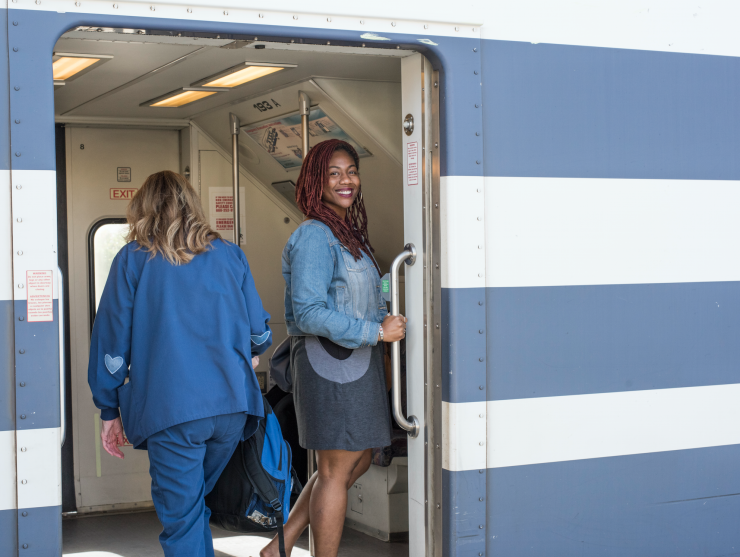Call the main number for Chapman University, and the friendly voice that answers belongs to Brandi Valentine:
“Chapman University. How may I direct your call?”
Though she works Monday through Friday in a university office on West Palm Avenue, when Valentine finishes her day she doesn’t return to a home in Orange or even in Orange County.
Instead, she walks across the street and boards a Metrolink train for Corona, a city of 150,000 in rapidly growing Riverside County.
“As far as the cost of housing, I would definitely say that’s a big factor,” Valentine said. “Corona can be a bit pricey. But I could afford Corona before I could afford Orange County.”
The median price of a home in Orange County– the point at which half the homes sold for more and half for less – reached $725,000 in March, according to real estate data firm CoreLogic. The median sales price in Riverside County was $375,000, up 7.1 percent from a year ago but still considerably lower than the $519,000 Southern California median. Rents follow suit: The Orange County average was $1,871 in the last quarter of 2017, according to data firm Reis, Inc. Rents in the Inland Empire, which includes parts of Riverside and San Bernardino counties, averaged $1,299.
As workers are forced farther from major employment centers in search of more affordable housing, many face a grueling commute. Corona is only about 22 miles from Orange, but during the afternoon rush hour it is an arduous hour-long drive, and on a bad day it could be a 1½-2 hours.
The train is a solution for Valentine, who is able to leave home at 6:55 a.m. to take the 7:17 train to Orange Station and arrive at work by 8. In the afternoons, she walks in her front door an hour and five minutes after leaving work.
“I’m a mom, so I spend my time on the train just trying to get myself prepared for that second job when I get home. Just relaxing, maybe some music, but I like to read,” Valentine said.
The Metrolink system’s convenience to Main Campus and the Rinker Health Science Campus in Irvine eases the daily grind of at least 67 other faculty, staff and commuting students — particularly because the University provides a $100 subsidy toward employees’ full monthly fare via the Metrolink Corporate Quick Card Program. For Valentine, who is completing her undergraduate degree at Chapman, there is a double bonus. She also receives a student discount from Metrolink. Her final fare: $62 a month, no gas or road rage required.
“There are a lot of people that live even farther than me that commute,” Valentine said, mentioning train-riders who live as far away as Perris. “I asked one of the ladies, ‘Why?’ She explained, ‘Well, I bought my home and of course I got a great price on my home, but then I make great money in Orange County.’ I can understand that. And there are many that are like her.”
Though they have been renting a townhouse, Valentine and her husband, Corey Lewis, hope to buy a home in the next two years where they will raise their two young daughters.
“Realistically, my ideal home? There are four of us. I would love a three- or four- bedroom, one-story, built within the last five years,” Valentine said. “But I’m OK with having my first starter home as I work my way up.”
She and her husband have family in Corona and will be shopping for homes in the area, with an eye toward a new twist on the old mantra of location, location, location.
“As long as I can stay near the Metrolink, I’m fine,” she said. “That’s a very important factor for us.”
This story is a part of the spring 2018 issue of Chapman Magazine.





Add comment